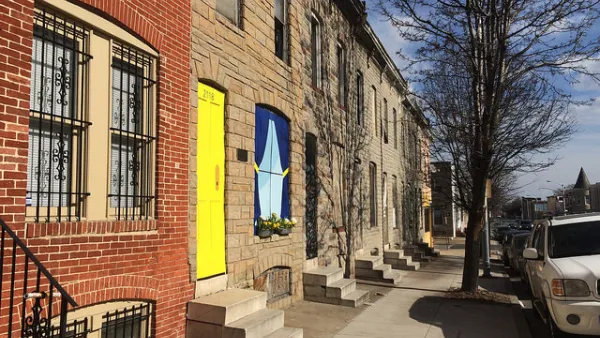A new AIA report shows that new homes under construction are getting smaller in response to market forces.
"Key characteristics of the American home continue to evolve, in part because of a dramatic slowdown in the housing industry, in part because emerging weakness in the national economy, in part because of demographic changes in our population, and in part because of the growing awareness of sustainable design principles.
One obvious sign of the changing characteristics of homes is their size. According to government figures, the average size of a new home has increased almost 50 percent over the past three decades. As recently as 2006, almost twice as many residential architects participating in the AIA Home Design Trends Survey reported home sizes to be increasing as reported them to be decreasing. By 2007, that trend had reversed, as more residential architects reported home sizes to be decreasing than increasing. With the 2008 survey, more than twice as many respondents reported home size declines as reported increases (33.5 percent vs. 15.5 percent).
Trends are similar, although less pronounced, for the volume of homes (e.g., higher ceiling heights, two-story foyers). In our 2005 survey, most (51 percent) residential architects reported that the volume of homes was increasing, where only a small minority (4 percent) reported them to be declining. By 2008, with growing concerns over housing affordability as well as dramatically higher home energy prices that increase the cost of heating these larger spaces, this gap had narrowed significantly: 28 percent of respondents reported the volume of homes to be increasing, while 12 percent reported them to be declining."
FULL STORY: As Housing Market Weakens, Homes Are Getting Smaller

National Parks Layoffs Will Cause Communities to Lose Billions
Thousands of essential park workers were laid off this week, just before the busy spring break season.

Retro-silient?: America’s First “Eco-burb,” The Woodlands Turns 50
A master-planned community north of Houston offers lessons on green infrastructure and resilient design, but falls short of its founder’s lofty affordability and walkability goals.

Delivering for America Plan Will Downgrade Mail Service in at Least 49.5 Percent of Zip Codes
Republican and Democrat lawmakers criticize the plan for its disproportionate negative impact on rural communities.

Test News Post 1
This is a summary

Test News Headline 46
Test for the image on the front page.

Balancing Bombs and Butterflies: How the National Guard Protects a Rare Species
The National Guard at Fort Indiantown Gap uses GIS technology and land management strategies to balance military training with conservation efforts, ensuring the survival of the rare eastern regal fritillary butterfly.
Urban Design for Planners 1: Software Tools
This six-course series explores essential urban design concepts using open source software and equips planners with the tools they need to participate fully in the urban design process.
Planning for Universal Design
Learn the tools for implementing Universal Design in planning regulations.
EMC Planning Group, Inc.
Planetizen
Planetizen
Mpact (formerly Rail~Volution)
Great Falls Development Authority, Inc.
HUDs Office of Policy Development and Research
NYU Wagner Graduate School of Public Service




























